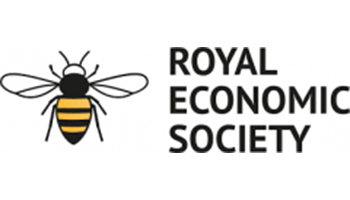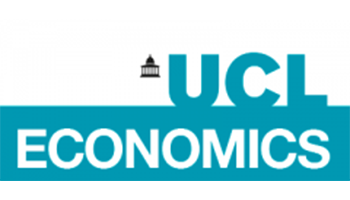The fashion industry has changed dramatically over the past century, transformed from a collection of small Parisian boutiques into a multi-billion dollar international network of e-commerce giants. But today’s widespread availability of cheap garments comes with heavy human and environmental costs.
Newsletter from 28 March 2025
Whether you realise it or not, you make fashion choices every single day. Not only do these decisions affect how people perceive you, but they also shape the planet’s environment and eco-systems – and they have a direct impact on the lives of 300 million garment workers around the world.
The clothes, shoes and accessories you put on each morning reflect a rich economic and historical story. With this in mind, this week on the Economics Observatory, we published four new articles exploring the cultural, economic and environmental impacts of the fashion industry. It is often said that fashion is cyclical: exploring the economic forces behind these cycles reveals an industry marked by overconsumption and exploitation.
Fashion through the ages
We kicked off our fashion-focused themed week with a piece by José Antonio Miranda (University of York) and Alba Roldán (Universidad de Alicante). They examine the history of the fashion industry, charting the sector’s journey from 19th century Parisian boutiques to modern-day ‘fast fashion’ giants.
José Antonio and Alba explain that while contemporary globalised fashion business models are a relatively recent phenomenon, it is possible to trace the evolution of the industry through the last couple of centuries. Starting in Paris in the mid-1800s, the sector soon spread outwards, with influential designers and labels popping up in London, New York and Milan.
It was in the Italian city that the sector changed most dramatically. Brands like Armani, Moschino and Versace exploded in popularity from the 1970s onwards, leading to a surge in international commerce and influence. As a result, the value of Italian garment exports rose from €800 million in 1970 to around €20 billion in 1990.
Crucially, this was supported by the emerging success of lower-priced clothing brands. For example, the Benetton group (which was created in the mid-1960s) launched designs that were accessible to a wider range of consumers. José Antonio and Alba argue that Benetton also anticipated some of the strategies that would later be developed modern-day fast fashion retailers, such as flexible production and ultra-low prices.
The growth of the global fashion industry is itself a story of industrialisation. The transition from haute couture (bespoke tailored items) to ‘ready-to-wear’ clothing is the product of rapid industrial development from the 18th to 21st centuries. Once innovative designs met large-scale manufacturing capabilities, the world of fashion ballooned outwards into the powerhouse we see today.
Fast and furious
The true costs of fast fashion are explored in a piece by Elaine Ritch (Glasgow Caledonian University), posted earlier this week. Elaine argues that the benefits of affordable clothing as a means of individual expression are offset by costs that are not necessarily reflected in the low prices. The fast fashion business model is built on exploitation of both the environment and human beings, she says.
For example, fashion is the second most polluting industry after aviation. Not only are the manufacturers of garments heavily dependent on scarce resources, but they also produce items that are made with little expectation for longevity, with clothes often quickly ending up in landfill.
Garment production also comes with a heavy human cost. For example, the draining of the Aral Sea in Uzbekistan – carried out to satisfy the surge in irrigation requirements caused by rising European cotton demand during the 1960s – has had catastrophic consequences for public health. According to Elaine, the destruction of this ecosystem has reduced local air quality, leading to an increase in respiratory disease and cancer diagnoses in the surrounding area.
Similarly, the low prices in the fast fashion industry rely on the mistreatment of many of the sector’s workers. For Elaine, outsourcing clothing manufacture to reduce production costs can lead to textiles workers being exploited through long working hours, low wages and inhumane working conditions. In some cases, there have even been allegations of modern-day slavery. Keeping high street prices low has meant cutting both corners and costs.
Mounting costs
These ideas are developed further by Xiaoyang Long (Wisconsin School of Business) in a piece posted on Wednesday. She notes that the fashion industry is a major drain on natural resources and is one the global economy’s most prolific polluters, accounting for 8-10% of all carbon emissions.
Starting with resource intensity, Xiaoyang shows that making clothes is thirsty work. Producing a simple cotton t-shirt can require the same amount of water needed to satisfy one person’s drinking needs for two and a half years. As a result, the fashion industry uses an estimated 79 trillion litres of water per year. This is equivalent to draining Lake Superior (the third-largest freshwater lake in the world by volume) almost seven times over.
These negative environmental effects are also distributed highly unevenly. In many cases, the bulk of fabric and apparel production occurs in developing countries, away from the Western countries where the end products are purchased.
Xiaoyang points out what this means: that the resource consumption, air pollution and industrial waste caused by the fashion industry are all concentrated in poorer countries, where there is often less infrastructure to deal with the consequences. Insatiable demand in the West leads to irreparable damage further afield.
It's not just production waste that is the problem. Xiaoyang observes that ‘post-consumer apparel waste’ (garments that people throw away) is often exported to developing countries, where mountains of cheap fast fashion products have started to overwhelm local second-hand markets. For example, every week, Ghana receives 15 million items of second-hand clothing. Almost half of these garments are reported to be unsellable and end up overflowing local landfills or polluting the country’s beaches.
Tales from Dhaka
On Thursday, we posted a piece by Dina Siddiqi (New York University), which explores the evolution of Bangladesh’s garment industry. Her overall view: that the success of the industry’s rapid rise to international dominance has come at the expense of workers’ wellbeing (particularly for women).
Analysing the role and reputation of women in Bangladesh’s garment industry reveals several lessons about the sector as well as the country’s wider economy and society. For some, women’s employment is an example of modernisation and empowerment. For others, the industry’s reliance on sweatshops and exploitation is representative of Bangladesh’s dependence on international demand for cheap clothes.
What is constant across each narrative is the shocking precarity of the fast fashion model of garment production. This vulnerability was laid bare during the Covid-19 pandemic, when large-scale cancellations of orders from American and European clients led to mass lay-offs and missed wages.
Historically, workers in Bangladesh have also faced a system of political repression. For example, the criminalisation of protests and labour organisations enabled the government and the Bangladesh Garment Manufacturers and Exporters Association (BGMEA) to discredit union activism and undermine labour platforms. For Dina, this ‘repressive and brutal imbalance of power’ clashes with the narrative of development and modernisation.
But change could be afoot. The toppling of the authoritarian Awami League regime in the summer of 2024 has paved the way for labour reform in Bangladesh. Although many workers were once again stranded without pay in the immediate aftermath of the uprising, the new regime has since set up a labour reform commission to provide recommendations for new policies.
For Dina, the biggest test is yet to come. Policy-makers in Bangladesh must make priorities of wage stability and the right to unionise – only then will the growth of the garment industry qualify as a true indicator of economic development and modernisation.
The fashion industry, in numbers
To round off fashion week here at the Observatory, we have put together a collection of charts exploring the rise of fast fashion and overconsumption.
Starting with the growth of fast fashion, between 2007 and 2015, brands like H&M, Primark and Zara consistently grew at a higher rate than the global fashion industry average (see Figure 1).
Figure 1: Annual growth of fast fashion brands versus the rest of the global apparel and footwear industry, 2007 to 2015
Source: Euromonitor International
From functional to extravagant, clothes are an indicator of cultural and economic context. Financial uncertainty and high unemployment drive fashion trends towards affordability and wasteful production practices (Uysen, 2025). For example, Shein was founded during the global financial crisis of 2007-09. Sales then skyrocketed by a staggering 212% during the period of economic hardship caused by the pandemic (see Figure 2).
Figure 2: E-commerce net sales development of leading fast fashion brands, 2018 to 2024
Source: ECDB
The pandemic also accelerated the shift towards online shopping in the UK (see Figure 3). Fashion accounts for over 31% of online sales, with 86% of the UK population using digital platforms to purchase clothing and footwear (Marriott et al, 2025). Online shopping may be convenient, but research shows that it encourages overconsumption and creates additional waste through shipping and packaging (Davidson, 2024).
Figure 3: Online sales as a percentage of total retail sales in the UK, 2007 to 2025
Source: ONS
But where does most of this overconsumption take place? People in Australia, Europe, North America and the UK spend the most on clothes and footwear (see Figure 4). Luxembourg tops the list, with the average resident spending over $2,000 on apparel in 2024 (see Figure 5).
Figure 4: Per capita spending on clothes and footwear by country, US dollars, 2024
Source: Statista
Figure 5: Top ten countries with highest per capita spending on clothes and footwear, US dollars, 2024
Source: Statista
Out of fashion
The rapid growth of the global fashion industry over the past few centuries carries many important lessons. The explosion of production and consumption brings with it with heavy costs, both to the environment and to workers in developing countries like Bangladesh. Ultra-low prices and rapid order delivery – now hallmarks of the modern fashion business model – bear hidden negative costs that policy-makers cannot afford to overlook.
But not all hope is lost. Whether shopping more mindfully from second-hand and rental markets, or repairing, upcycling and disposing of clothes responsibly, there are some small ways that consumers can blunt some of the negative effects of the garment industry. Regardless of whether you fancy yourself a ‘fashionista’ or not, we can all make consumption choices that contribute to the true cost of this industry.
Behind every t-shirt, coat and pair of jeans is a complex story about industrialisation, globalisation and exploitation. Both consumers and policy-makers would do well to keep this in mind.









































